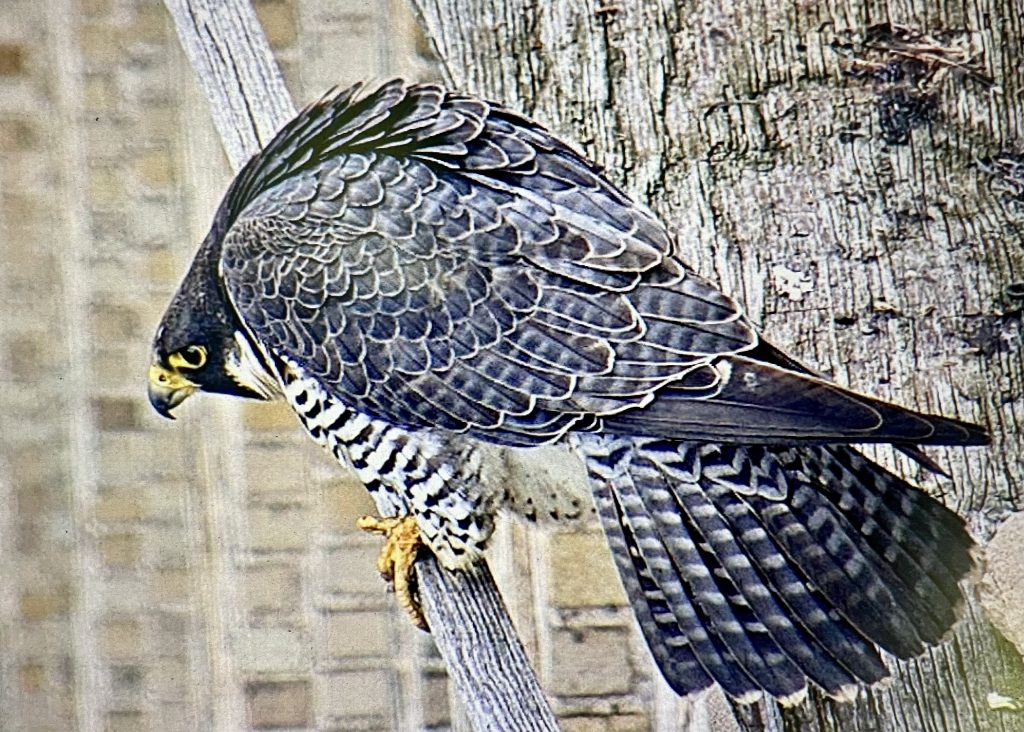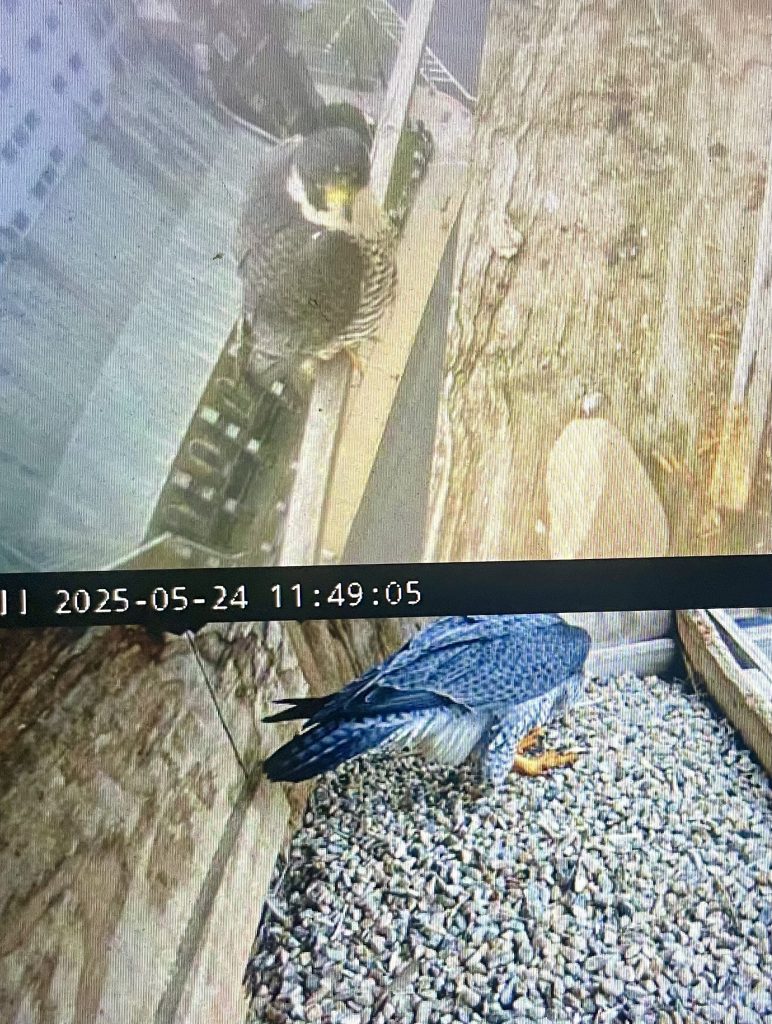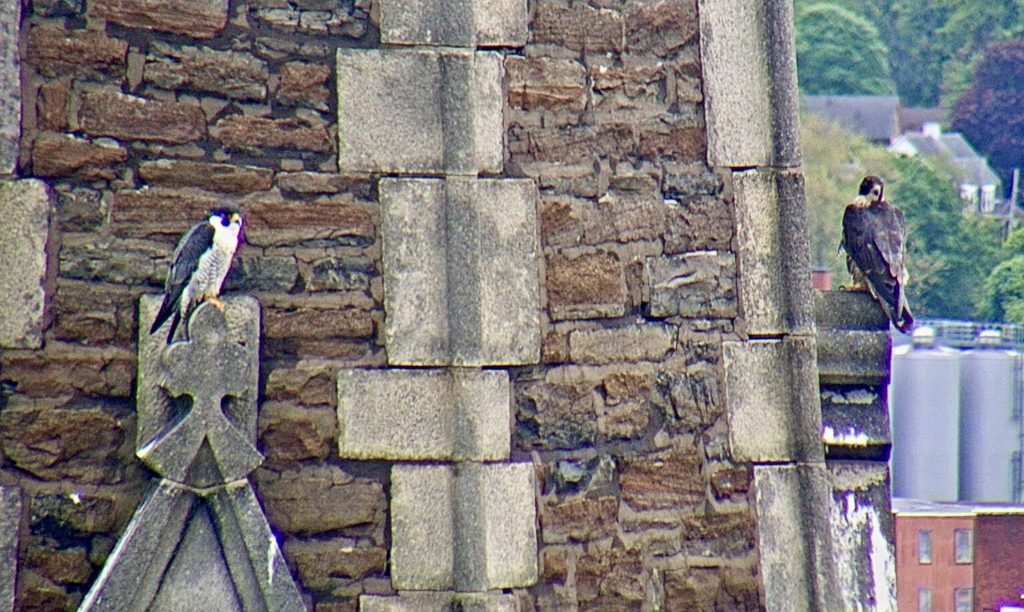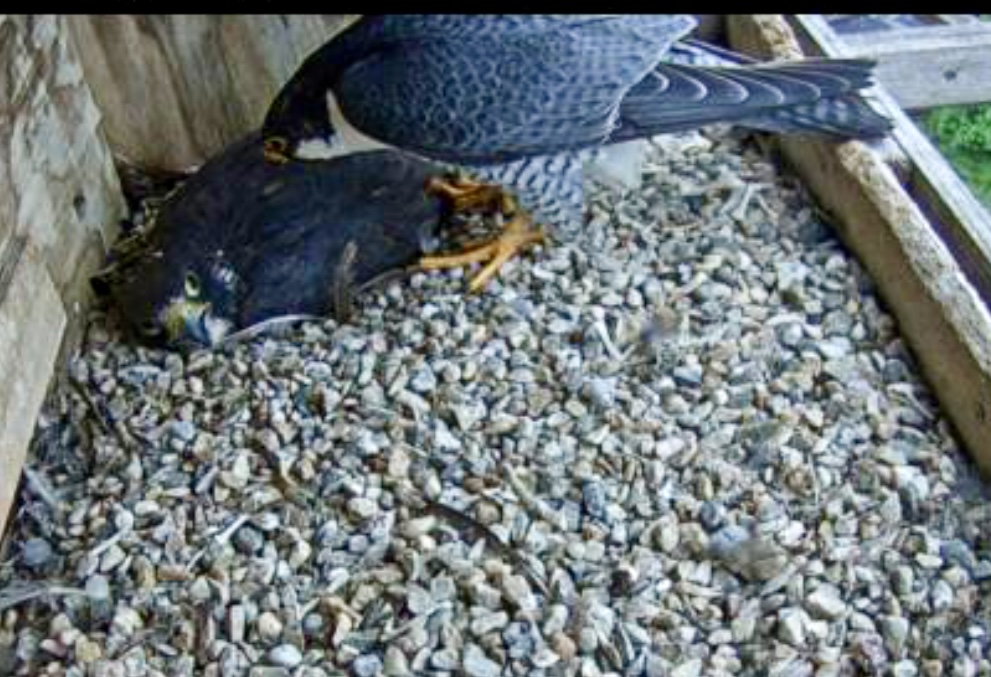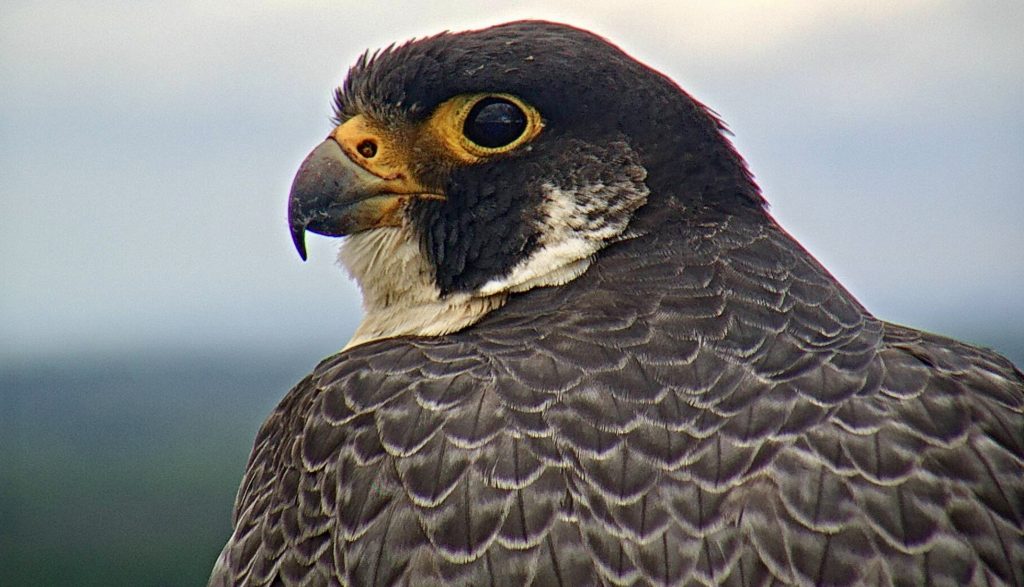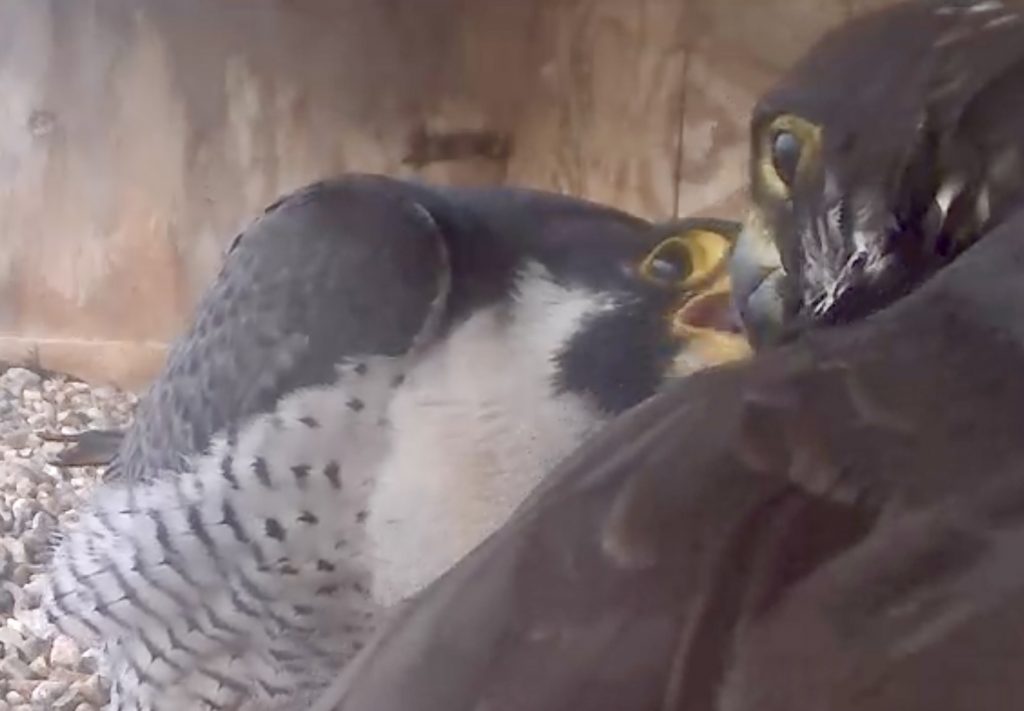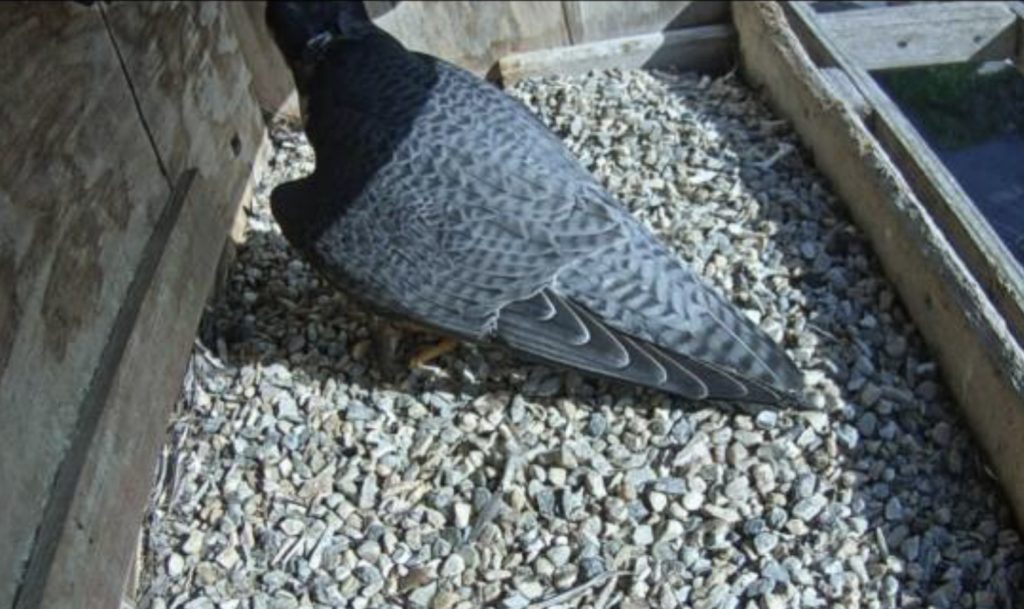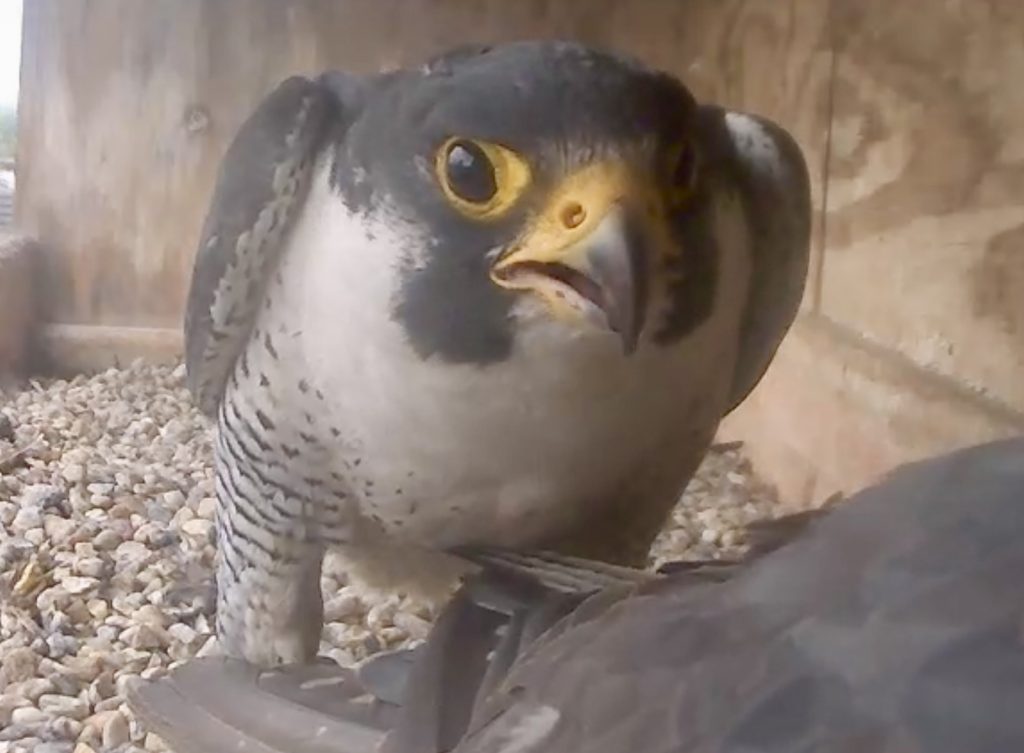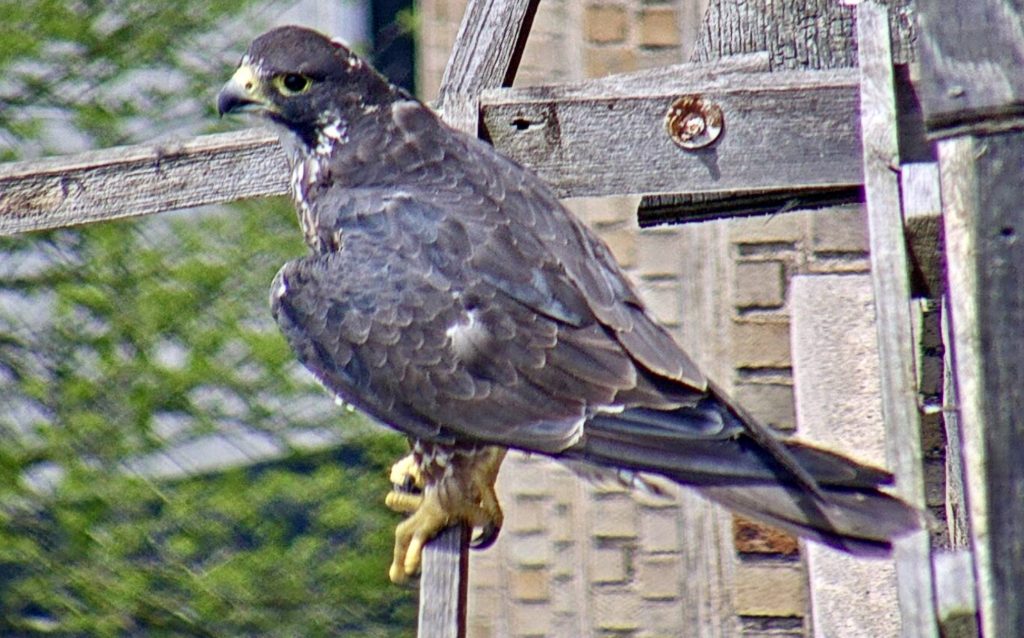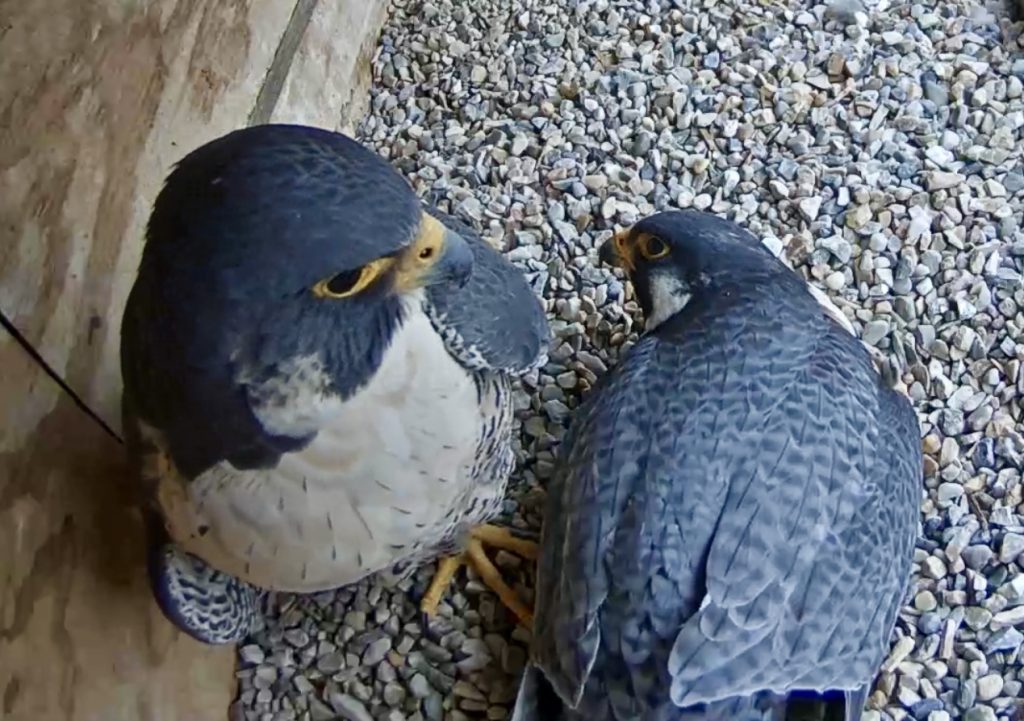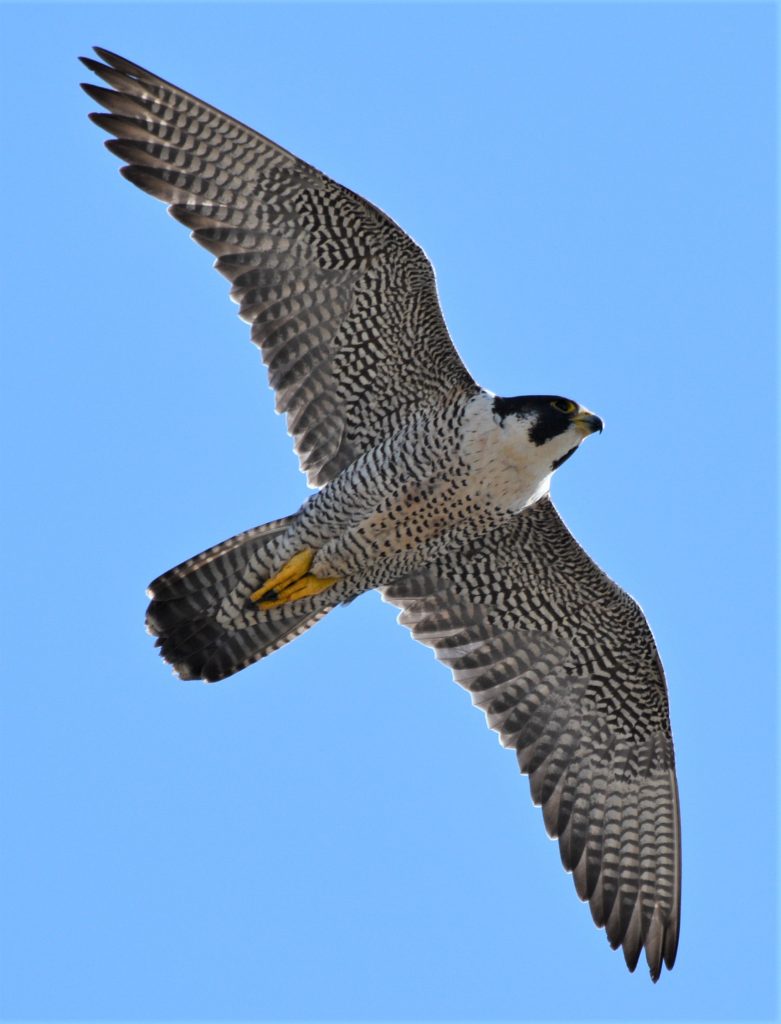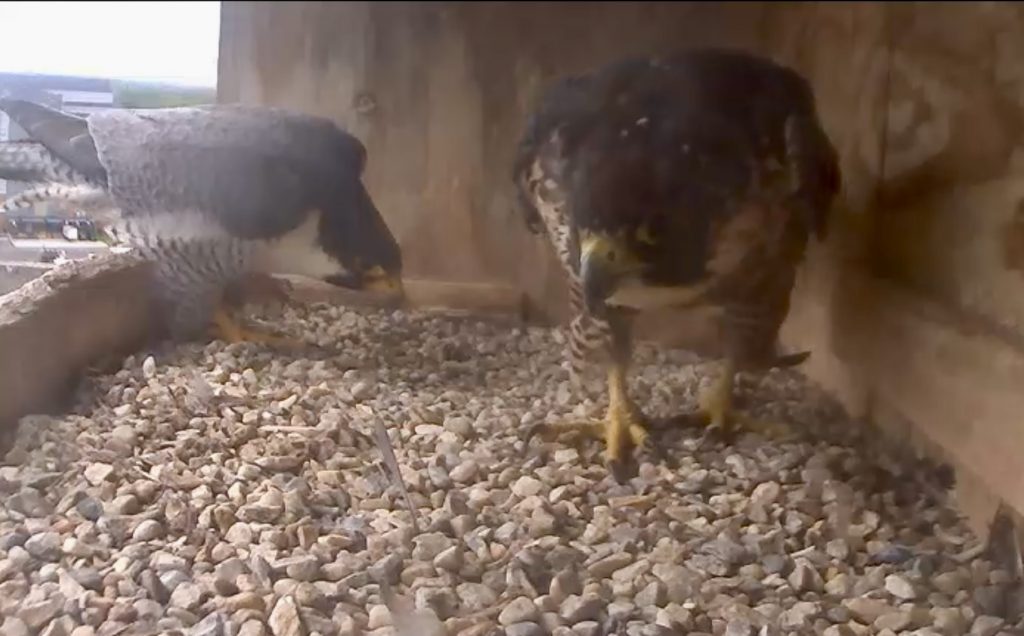
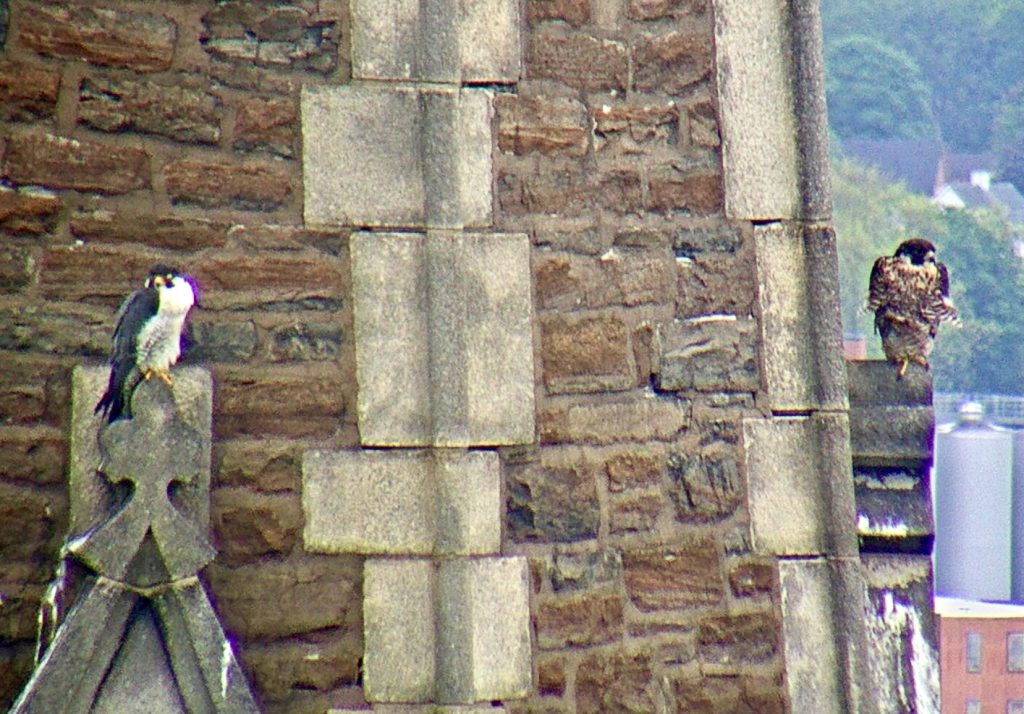
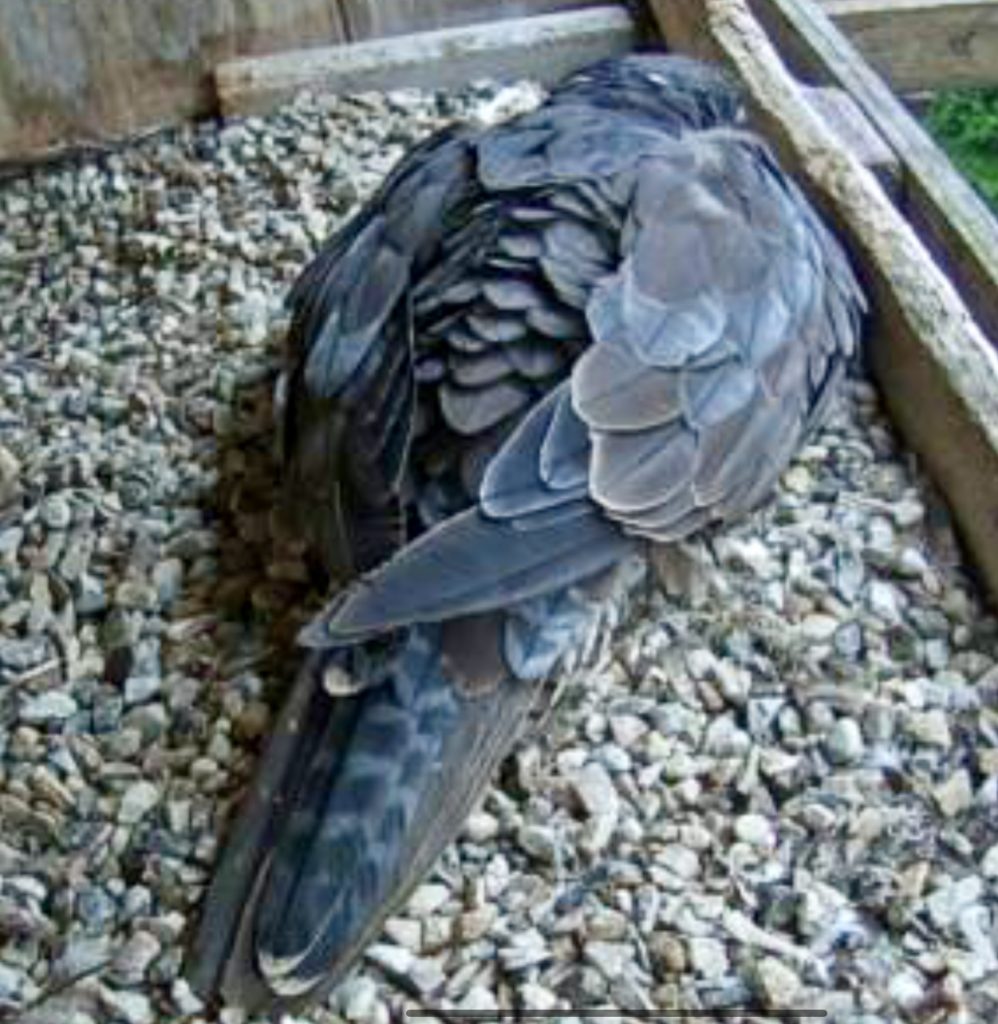
Over the past week, we’ve observed a decrease in certain breeding behaviors between Ares and Vera. Food gifts have become less frequent, and we’ve seen little to no mating activity. However, the pair’s strong connection is still evident—ledge displays at the nestbox remain frequent, and the two continue to spend time in close proximity.
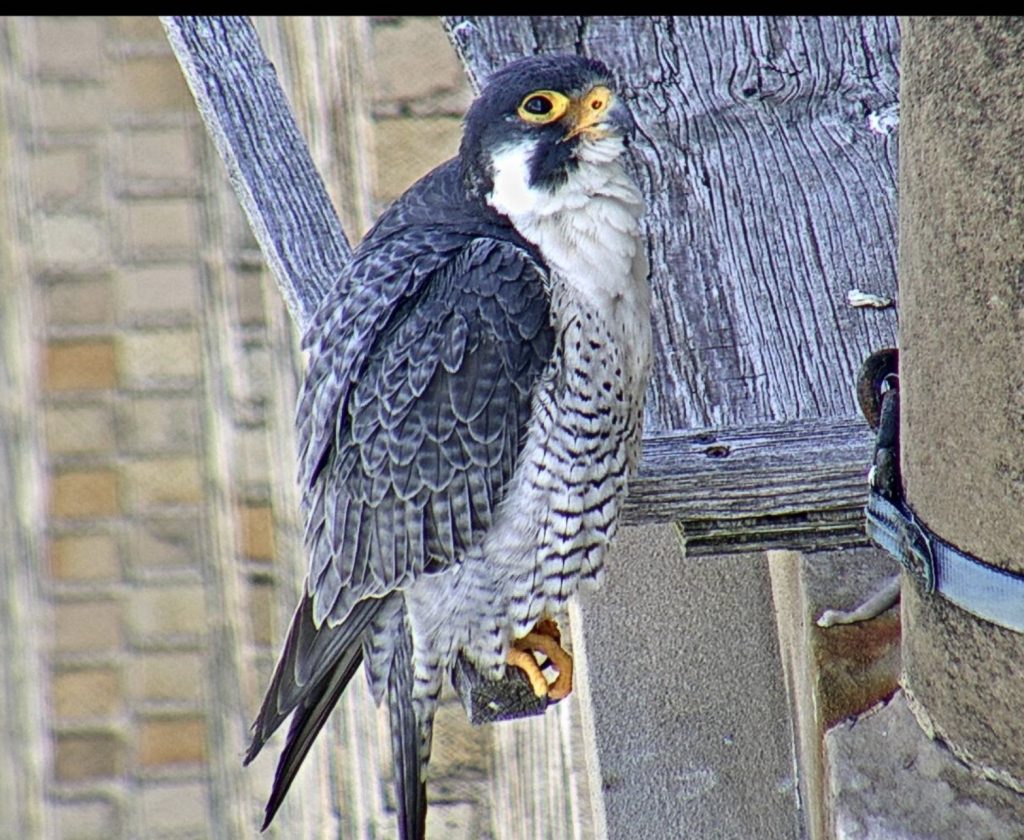
Ares, in particular, has been spending his nights at the nest site with increasing regularity—suggesting he may be responding to territorial pressure from unseen intruders, even if none have been caught on camera. Vera, meanwhile, continues her gradual transformation from juvenile to adult. Her brown feathers are giving way to a blue-gray adult plumage, and the dense spotting on her chest is slowly fading. Before long, she will look like a completely different bird.

Join Us This Friday – Falcon Fiesta Potluck!
Join us Friday, June 6 at 6:00 PM in the Upper Grace Church parking lot for our Falcon Fiesta Potluck—a fledgewatch celebration without fledglings. We’ll watch Ares and Vera in action, share stories from 11 years of remarkable urban falcon drama, and honor the memory of Astrid, the matriarch of the Utica territory.
Help Us Tell Their Story
We’re raising funds to install permanent interpretive signs in downtown Utica, telling the story of Astrid, Ares, and the legacy of peregrines in our city. Please consider supporting this project:
👉 Donate Here
